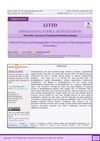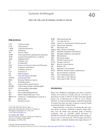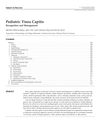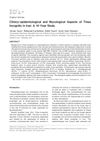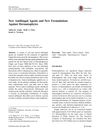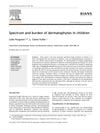Tinea Corporis and Tinea Capitis
May 2007
in “
Pediatrics in review
”
TLDR Ringworm of the body and scalp is treated with antifungal creams and oral medication, and children with scalp ringworm don't need to miss school.
The document from 2007 discusses Tinea, a group of fungal infections caused by dermatophytes, which are geographically widespread. The type of Tinea infection depends on the organism, its hosts, and local factors. Infections can occur through contact with infected humans and animals, soil, or inanimate objects. Tinea should be suspected in any red, scaly, pruritic, enlarging lesion or in pruritic scalp lesions that manifest scaling, folliculitis, or an inflammatory reaction. The causes of favic tinea were described in the early 1800s, and the dermatophytic fungi were classified in the early 1900s. In the 1950s, the natural course and pathogenesis of these infections were further described. In 1958, treatment with oral griseofulvin was introduced, eliminating the need for epilation with radiography or thallium. More recent antifungal medications, such as azoles, allylamines, and benzylamines, offer new options of shorter and more convenient dosing regimens.
